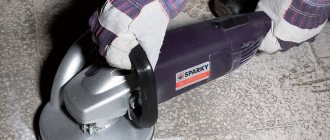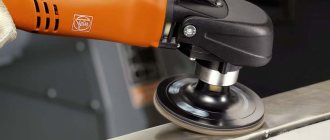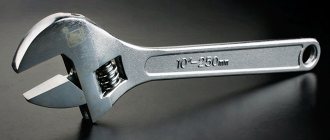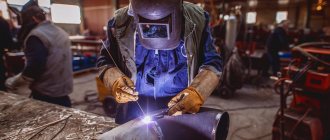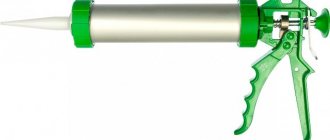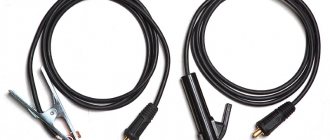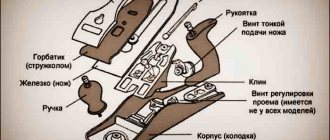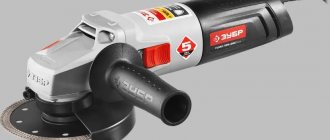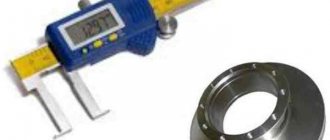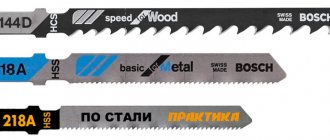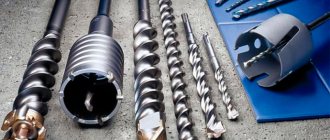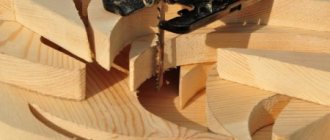Classification of abrasive wheels
Disks are classified into the following types:
- with undercut (PV – for cylindrical grinding);
- double-sided conical (PVDK);
- straight profile (PP – universal circle);
- with a conical one-sided or two-sided groove;
- ring (K – suitable for flat grinding);
- disc-shaped (T);
- cup conical or cylindrical;
- with a double-sided conical profile (2P: scope of application – thread grinding, slot grinding, gear grinding).
Marking of grinding wheels
Grinding wheels can vary in geometric shape, type of abrasive material, as well as type of bond, wheel grit, hardness, etc. When choosing a grinding wheel, hardness and texture may weigh more heavily than the type of abrasive.
According to various editions of GOSTs, the marking of circles has different designation parameters. Almost every manufacturer labels their wheels differently.
Thus, the complete marking of the varieties of grinding wheels contains:
- circle type;
- grinding material;
- disk dimensions;
- degree of hardness;
- grain size;
- structure;
- binder;
- maximum rotation speed;
- accuracy class;
- imbalance class.
Using a tool based on grain size
When choosing the appropriate grain size, it is important to know that different degrees of this parameter affect the amount of material removed. For example, the high grain size of flap wheels will allow you to successfully process even large metal pipes. And if we talk about wood processing, you will have to purchase a wheel with a much smaller amount of abrasive material.
Varying degrees of this characteristic are necessary in order to be able to carry out preliminary operations when peeling with a large cutting depth is required. Wheels with a different degree are well suited for wiping operations, and a separate group is required for working with copper, brass and aluminum.
Coarse wheel grit is most often required when grinding is carried out with the end of the wheel. In addition, they are also used when internal grinding is necessary. Most often, such devices are used on machines that are characterized by increased rigidity and processing power.
Circles with medium and fine grain are used for operations such as:
- grinding of hard metal alloys;
- processing of hardened steels;
- surface finishing;
- sharpening of other tools.
Medium-grained and fine-grained wheels are also used if very high precision is required from the work. Currently, this characteristic must comply with GOST R 52381-2005. This GOST for the grain size of grinding wheels replaced the previous document with number 3647.
Type of abrasive material
The most popular and common materials used in the manufacture of grinding wheels include:
- Electrocorundum. When purchasing such a circle, you can see white, titanium, chrome and zirconium options. The main disc used is white electrocorundum, which is highly self-sharpening. By working with it you can achieve a more even and smooth surface.
- Silicon carbide. There are black and green tones, this circle differs in structure and degree of fragility - it is harder and more durable than the first type described above. Area of application: working with hard alloys, porcelain and marble.
- Elbor. This type of grinding wheel has the hardest abrasive material and high heat resistance. Elbor can be used for sharpening cutting tools and other parts that can be deformed by heat, as well as for working with hard metals.
- Diamond. Another hard type of abrasive wheel. It is used when working with hard materials, glass and ceramic surfaces. It is self-sharpening, but cubonite and CBN have greater heat resistance without compromising strength.
Regardless of the type of abrasive material, all wheels are characterized by the parameters of strength, wear resistance and heat resistance, however, when choosing, you should take into account the main parameter - hardness. The hardness characteristic is prescribed in the standards of GOST 2424 and is calculated using special tables.
For example, the type of grinding material for the 25A F180 K 7 V wheel is white corundum. There are other types of known abrasives:
- normal electrocorundum (13-16A);
- white (23-25A);
- chromium (33 and 34A);
- titanium only one (37A);
- zirconium is also one (38A);
- monocorundum (43-45A);
- black silicon carbide (53 and 54C);
- green silicon carbide (62-64C).
Grinding wheel grit markings
When marking grinding wheels, manufacturers indicate only its width (MKM or F with a numerical indicator of grain size). The grain size not only indicates the wear resistance of the abrasive, but also plays an important role when grinding a particular surface.
The grain size of the wheel affects the quality and cleanliness of the surface finish. Consider the material you are working with. To get the cleanest possible surface, you should buy a wheel with the smallest grain size. However, a person working with such a wheel must understand that it quickly becomes greasy and the material being processed often gets burned.
According to GOST from 1980, units equal to 10 microns are used to measure the grain size of wheels. In the modern version of GOST R 52381-2005, circles are marked with the letter F with a certain number (as the number increases, the degree of grain decreases).
For example, the grain number according to the old GOST (M40-M5) and the new one (F280, F320, F360, F400-F600, F800). To decipher: such a disk is used for final finishing and honing of parts with an accuracy of 3-5 microns or less, as well as superfinishing. Or size 40, 32 according to the old GOST and F40, F46 according to the new one: wheels with this grain size are used for preliminary and final grinding of parts with surface roughness of 7-9 cleanliness classes, as well as for sharpening cutting tools.
Product quality characteristics
There are a lot of different parameters by which such products are classified. There are even more types of markings for abrasive wheels due to the fact that there are many different combinations of these properties. The main parameters of abrasive wheels for grinding machines are:
Grit index.- Type of abrasive material.
- Binder.
- Dimensions and shape.
- Hardness of the grinding material.
- Working speed.
A circle with the appropriate indicators is selected for use, which are indicated in the markings on the product itself.
Fixture Grit
This is the most significant characteristic. Its value determines how smoothly the sample will be polished. In addition, the size of wear, productivity, and the thickness of the layer removed per cycle also largely depend on this indicator. The smaller the grain of the tool, the higher the cleanliness of the processing. However, the speed of work with such granularity is reduced. In addition, such devices often cause burns to the part.
The old standard defines the grain size in microns, and is now denoted by the letter F with a number. The higher the digital component, the less grain. All these indicators are summarized in the table of grinding wheel grain size.
Materials for production
Like all characteristics, the requirements for the material from which grinding wheels are made correspond to GOST. Minimum conditions are wear resistance, low heat transfer, hard surface. Based on these conditions, the abrasive tool is made from the following material:
- A substance having a base of aluminum oxide (Al2O3) is called electrocorundum with a bauxite binder. GOST 28818 allows the addition of potassium oxide to increase hardness. This allows you to maintain the original properties when the temperature increases under intensive work conditions. Such circles are marked as follows: 12A - 15A - ordinary, 22A - 25A - increased hardness.
- The same material with a carbide base includes chrome, titanium, zirconium, and silicon compounds for working with hardened metals. Silicon carbide (52C - 65C) is needed to resist temperature changes when cooling the workpiece. Such products are marked with the letter A and numbers from 38 for zirconium to 95 for titanium.
- Rounded grains of spherocorundum are obtained by blowing liquid aluminum oxide, are characterized by increased hardness and are used for abrasive processing of carbide products. They are designated by the letters ES.
- The monocrystalline structure of monocorundum is the reason for the durability of wheels made from it. Due to the complexity of the production technology, they are very expensive. You can recognize them by markings 43A, 44A and 45A.
Application of binding materials
For a tight arrangement and protection from destruction, special substances are used in grinding wheels. Their quality, variety, and even distribution affect all the characteristics of abrasive tools. And also the presence of these materials shows the ability to independently sharpen crumbled sections of the grinding stone. If the binding component does not correspond to the surface being processed, the tool loses its main property, wear increases, grains that have not yet been worked are chipped, and burning and clogging appear.
Organic and inorganic binders can be used as binding elements. The first represent ceramic and silicate materials, the second - bakelite and vulcanite.
The following materials are used in a ceramic bond: refractory clay, quartz and spar. They are strong, durable, with a stable cutting edge. Tools on this basis can be cooled with special emulsions. Circles of small thickness are destroyed by lateral impact. Designated K0, K1, K3 and so on. In their production, silicon carbide or electrocorundum grains are used. They grind well in all ways, except for cutting and use in narrow grooves.
Abrasive disc size
The marking of abrasive wheels by size is written as follows: DхТхН (where D is the outer diameter, T is the height, H is the diameter of the hole). The D parameter can reach a maximum size of 1100 mm, the H value can be up to 305 mm, and the T parameter varies from 0.18 mm to 250 mm.
The types of CBN and diamond discs are described in more detail in GOST 24747-90. The marking of the shape of such grinding wheels consists of three or four symbols indicating the cross-sectional shape of the body and layer, its location on the wheel, and also provides information about the design features of the body.
For example, 150x16x32 is the size of a 25A white electrocorundum abrasive wheel.
Reminder when choosing abrasive wheels:
- When choosing the diameter of the circle, you should take into account the number of spindle revolutions and the ability to provide optimal speed.
- The larger the diameter, the less specific wear of the circle. There are fewer grains on the working surface of small circles. So, during operation they wear out unevenly.
- When choosing a diamond wheel, you should take into account the width of the diamond-bearing layer. If used incorrectly, ledges may appear on the surface of the wheel.
Circle type and size
The type of circle is indicated by a number from 1 to 39 in accordance with GOST 2424-83. It is possible to use the letter designation according to the old standard GOST 2424-75. Here are some options for making circles:
- Straight profile - type 1 or PP.
- Ring profile – 2 or K.
- Conical configuration - 3 or 3P.
- Double-sided conical configuration - 4 or 2P.
- Circle with one-sided groove - 5 or PV.
- Cup cylindrical circle – 6 or ChTs.
The next marking is the size designation DxTxH. D is the outer diameter of the circle, T is its height and H is its inner diameter.
Wheels with diamond or CBN abrasive are designated according to GOST 24747-90. The type of wheel is marked with 3-4 symbols indicating the shape of the circle and the cross-sectional shape of the abrasive layer, as well as the location of the abrasive and design features.
Structure and hardness index
The density of the structure of grinding wheels is indicated by the percentage of the volume of abrasive grains per unit volume of the wheel. The more abrasive, the denser the structure of the grinding wheel will be.
When sharpening a tool, a wheel with a less dense structure is better able to clean the surface of material particles, poses less risk of deformation and cools faster.
Often, specialists use disks of medium hardness, but it all depends on the type of work being performed, the coating being processed and the tool itself.
What are the structure numbers and volumes of abrasive in the grinding wheel:
- dense structures include units of measurement from 1 to 4;
- Average density includes numbers 5-8;
- to open – from 9 to 12;
- a highly porous structure is observed in circles with indicators 13, 14>.
However, do not confuse wheel hardness with abrasive hardness. According to GOST 2424, the hardness of a grinding wheel is distinguished by a capital letter.
According to GOST R 52587-2006, there are the following designations:
- very soft - letters F and G;
- to soft circles – H, I, J;
- medium softness includes markings K, L;
- averages are M, N;
- circles of medium hardness are designated by the letters O, P, Q;
- solids are designated as R and S;
- very hard – T, U;
- Extremely hard ones include V, W, X, Y, Z.
What grinding wheel hardness should I choose? This depends on many parameters - the characteristics of the material or surface being processed, physical properties, and, of course, the power of the grinding machine. If you need to maintain the exact shape of the material being processed, you should purchase a wheel with a high degree of hardness. Soft ones are used to prevent cracks and burns, also when grinding without additional liquid-lubricant cooling of the surface.
For example, let's take the same 25A grinding wheel, which has a hardness class of K and a structure of 7. This means that this disc is medium-soft and has a medium abrasive structure.
Structural density
The essence of the indicator of the structural density of an abrasive is the ratio of grains to the total volume of the disk, that is, grains and binder. The higher the grit density, the more material can be removed in one pass. Sometimes the lower the density, the better. For example, when sharpening. The disc self-cleans faster and does not overheat due to rapid heat dissipation, protecting the disc from deformation.
Typically the markings look like this:
- dense structure – from 1 to 4;
- average – from 5 to 7;
- open – 8, 9, 10;
- porous – 11, 12.
Ceramic, bakelite and vulcanite binders are usually used as binders. The first is the most common, it is based on sand, clay and quartz. These discs are highly durable, but they are also fragile. It is not recommended to use them for power processing.
Bakelite circles are based on resin. Such discs are highly resistant to temperature changes during operation. Volcanic bond is rarely used and usually in highly specialized areas; it is based on rubber.
Bundle type
The bond is an indicator of the bonding of abrasive grains to each other. Modern grinding wheels have three types of bonds:
- V (ceramic, previously marked with the letter K);
- B (bakelite, formerly known as B4 and BU);
- R (volcanic, previously designated by the letter B).
Ceramic marked wheels have materials such as quartz, sand, clay, etc. mixed and ground in various proportions. Such circles are quite high-strength. However, they should not be used for power grinding of metal.
Bakelite or artificial resin wheels are highly elastic and heat resistant. Bakelite is often mixed with reinforcing elements, such as graphite.
The volcanic binder consists mainly of rubber; such wheels are used in certain processing industries.
Using the example of the 25A F180 K 7 V grinding wheel, we will consider the type of bond, where the designation V refers this disc to a ceramic bond.
